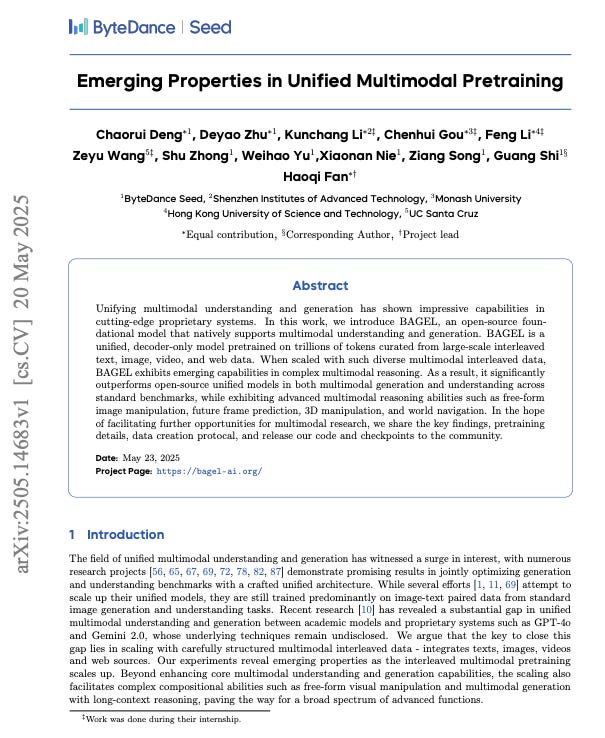Emerging Properties in Unified Multimodal Pretraining
The quest for a truly versatile artificial intelligence, one that can not only understand but also create across a seamless blend of text, images, and video has been a long-standing ambition in the AI community.
Researchers have grappled with a fundamental question: How can we build a single AI model that masters both the analytical "left-brain" task of comprehension and the creative "right-brain" task of generation without compromising either?
The research paper "Emerging Properties in Unified Multimodal Pretraining" introduces BAGEL, a groundbreaking open-source model that offers a compelling answer.
At its core, BAGEL is a unified, decoder-only model, meaning it uses a single, elegant architecture for all tasks.
The key innovation lies in its "Mixture-of-Transformer-Experts" (MoT) design, which cleverly allocates specialized internal experts for understanding and generation while allowing them to communicate and collaborate through a shared attention mechanism. This avoids the information bottlenecks that have limited previous models. The researchers trained BAGEL on a massive and diverse dataset of "interleaved" multimodal data (trillions of tokens from text, images, videos, and web pages) that mirrors the rich, interconnected way we experience the world.
The results are remarkable. BAGEL not only excels at standard benchmarks for both understanding and generating images but also exhibits emerging properties as it scales. It can do more than the sum of its training data. These are complex reasoning abilities that weren't explicitly programmed but surfaced organically from the extensive training. These capabilities include sophisticated image manipulation from natural language commands, predicting future video frames, and even navigating virtual 3D environments. The most significant takeaway is that by unifying understanding and generation in a scalable, bottleneck-free architecture and training it on diverse, real-world data, we can unlock new frontiers of complex, compositional reasoning in AI. BAGEL represents a major leap towards more general and capable AI systems.


